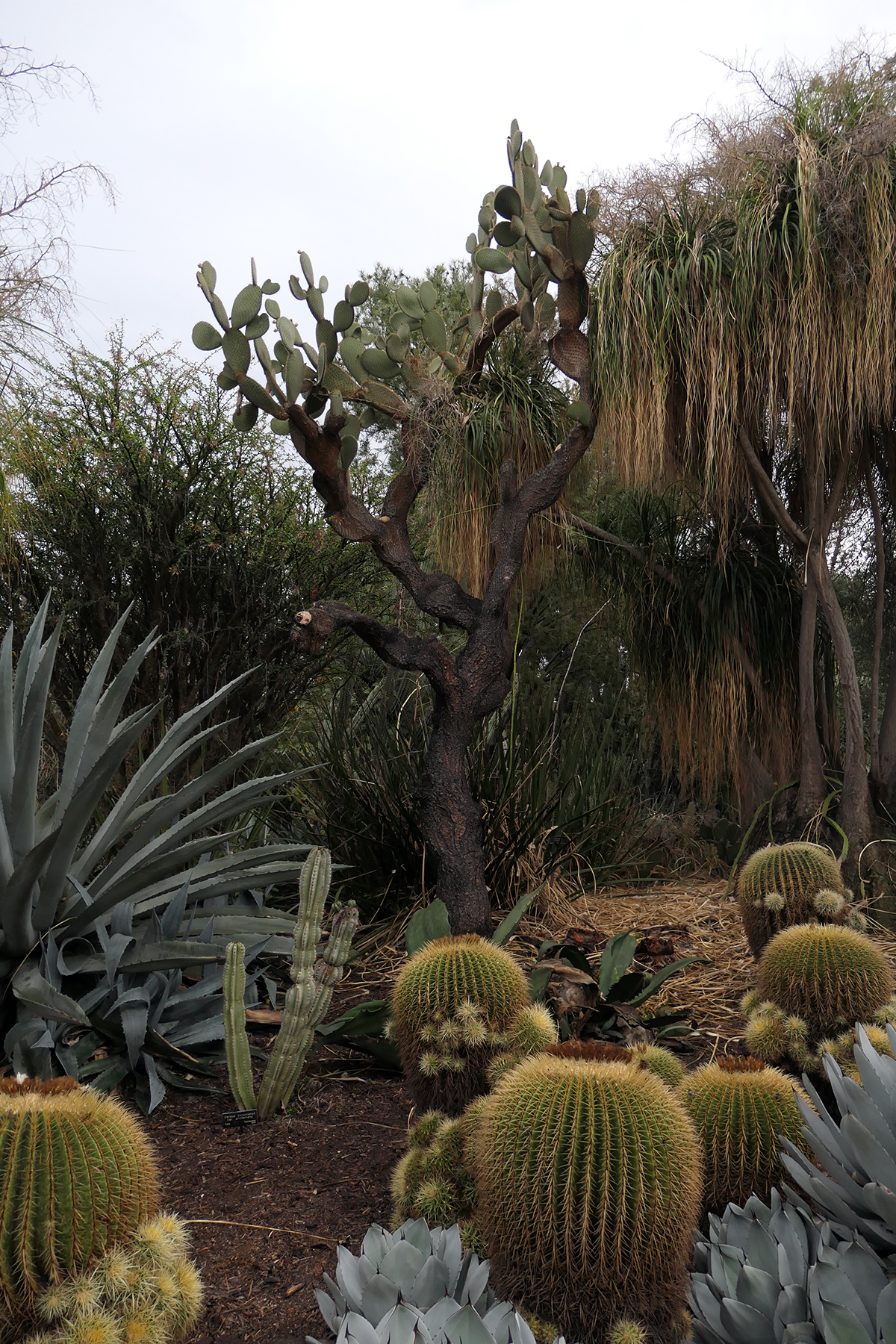207 acres, 120 of them filled with 16 themed gardens. 15.000 different varieties of plants. $25 entrance fee. 6 head gardeners, 1200 volunteers, 485 permanent employees. With an endowment of more than $400 million (and half a billion dollars raised since 2001 with the help of former Reed president Steve Koblick) the Huntington Library, Art Collections and Botanical Gardens is among the wealthiest cultural institutions in the country.


4 major living plants collections among them orchids with over 10.000 plants, 3,600 unique varieties, representing 280 genera, cycads with over 1500 specimen, 80 different camellia species—sasanqua, japonica, reticulata, hiemalis, vernalis, tunghinensis, nitidissima, and semiserrata, to name just a few—and some 1,200 cultivated varieties, and bonsai holdings in the hundreds, from centuries-old twisted junipers to majestic pines, stately elm forests, and more.



1 Heuer. 1 hour. 1 heartbeat to decide that hour would be spent among the cacti in the desert garden.
The light was fading, there was a diffuse mist in the air, the Huntington Botanical Garden was closing soon – the ride from L.A. to Pasadena had been a Friday-rush-hour-traffic nightmare and I got there late.


In short, the ideal conditions for an absolutely magical hour, practically no-one around, silence descending, and the beauty of the plants enhanced by the softness of the damp dusk.



The desert garden I saw is a marvel. It’s one of the largest in the world and almost a century old. It features more than 2,000 species of succulents and desert plants in sixty landscaped beds. Here are bits and pieces I learned from the Huntington’s website:
It is said that when the first English botanist saw the Fouquieria columnaris, he thought it resembled the fantasy creature from Lewis Carroll’s The Hunting of the Snark and dubbed it “Boojum.”



The ribs of the golden barrel cactus resemble an accordion, expanding and contracting as the plant stores and uses water. Many of the golden barrels you see here were planted from seed before 1915 and now weigh several hundred pounds.



Beaucarnea, Bottle Palms, unlikely members of the agave family, are some of the oldest specimens in cultivation, and among the earliest plantings in the Desert Garden. Many species of agave terminate their life cycle by generating a branched inflorescence to 30 feet.

In other words, one last hurrah and then you’re dead…. well, I know I’ll die content having seen these masses of plants in their beauty, variety, strangeness, and incredible economy of survival in hostile environments.



Not that I currently plan on it, dying that is. I am instead scheduling return trips to this botanical garden to see the rest that’s on offer. Next time I’ll know to reserve a full day!



And in case beauty isn’t enough, looks like some of these species are medicinally useful. I cannot, of course, verify those claims.

Music today is what I listen to when I am happy, ever since 1970 when I first discovered Gismonti.







Deb Meyer
So beautiful! reminds me of the Desert Botanical Garden in Phoenix, Arizona where I did my requirements for my Master Gardener’s certification. It was a special time and place for me! Thanks for sharing.
Sam Blair
Great presentation. A magical hour indeed. Your images remind me of the Dylan Thomas poem, referring to “The force that through the green stem drives the flower”. From your images, I can feel the energy of that force pushing upward toward the light.
Sam
Ken Hochfeld
Majestic and magical indeed!
Sara Lee
Wonderful photos! In less rushed circumstances, I visited – and was awed/dazzled by – those cacti about fifteen years ago. Glad for the re-visit, and hope you get a return visit soon!